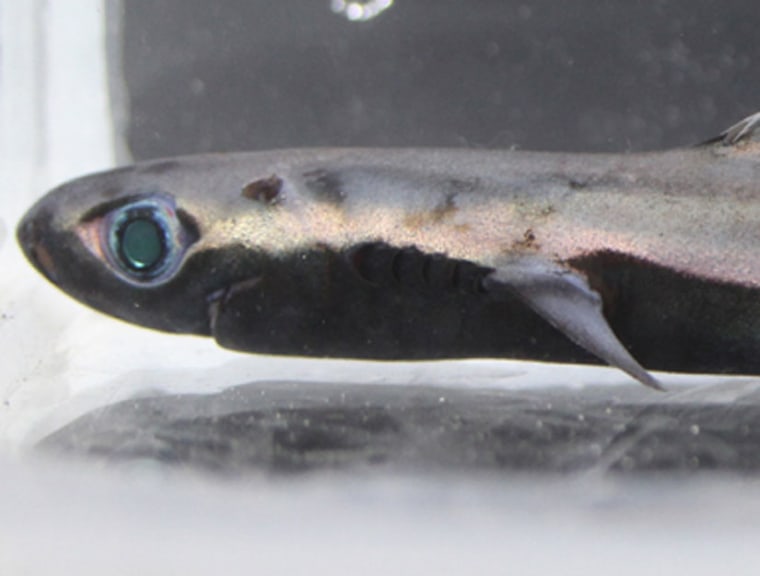The first detailed study of the rare splendid lantern shark reveals that not only does it glow in the dark, but the light effects create a "cloak of invisibility" that helps shield it from predators.
The study, accepted for publication in the Journal of Experimental Marine Biology and Ecology, is also the first to document the cylindrical-shaped shark's presence in waters around the Okinawa Islands of Japan. Previously, the shark was confirmed to exist only in the East China Sea, off Taiwan, and in the waters around southern Japan.
Its natural light show, produced by light-emitting organs called photophores, serves many functions. The cloak of invisibility is perhaps one of the most beneficial, since it helps to protect the small, shark from upward-looking predators. The lantern shark is a member of the small dogfish sharks.
"The photophores replace the down-welling light from the sun, which is absorbed by the shark's body," lead author Julien Claes explained to Discovery News. "The silhouette of the shark therefore disappears when seen from below."
Claes, a postdoctoral researcher in the Catholic University of Louvain’s Marine Biology Lab, and colleagues Keiichi Sato and Jerome Mallefet collected, and maintained in captivity, three specimens of the splendid lantern shark.
Analysis of the sharks revealed that each had nine distinct luminous zones where light was emitted. Some of these zones, such as one on the belly, contribute to the "cloak of invisibility" effect. Other, even brighter, zones are present on the shark's sexual organs, flanks, tail and pectoral fins. The researchers suspect these are probably used during schooling and sexual communication.
"Sharks use internal fertilization, so the presence of photophores on the sexual organs may facilitate mating," Claes said. "Moreover, it might also be a way for the sharks to signal that they are ready to mate or that they are a better candidate for reproduction in a light-induced sexual selection system."
The scientists believe nerves and hormones primarily control the light, with pigments also moving in cells as part of the process.
The luminescence likely evolved when lantern sharks colonized the deep sea probably during the end of the Cretaceous, 65 to 75 million years ago. The splendid lantern shark to this day lives 656 to 3,281 feet below the water's surface, an area with extremely low light levels.
Claes and his colleagues previously studied another member of this shark family, the velvet belly lantern shark. Both this and the splendid lantern shark share similar luminous zones and other features. It's therefore probable that their ability to glow evolved long before their clades split up at least 31.55 million years ago.
It's even possible that many other prehistoric marine animals could glow in the dark.
"Unfortunately bioluminescence is a soft-tissue phenomenon that leaves no, or extremely few, fossil tracks," Claes said. "It is therefore very difficult to establish if a lot of prehistoric animals were luminous, but it is probably the case at least in the deep sea, since bioluminescence is currently widespread in this environment."
Nicolas Straube, a researcher at the Bavarian State Collection of Zoology, told Discovery News that he "fully agrees" with the new paper's conclusions.
Straube explained that this latest study supports previous theories about lantern shark evolution and luminescence, given both the similarities and differences between the two best-documented species: the velvet belly lantern shark and now the splendid lantern shark.
At least 33 species exist in this diverse shark family, however, so much remains to be discovered about these dwellers of the ocean depths.
